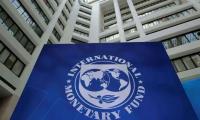ISLAMABAD: The latest official poverty estimates show declining trends in Pakistan as the survey for 2018-19 showed that poverty had declined by 2.8 percent from 24.3 percent in 2015-16 to 21.5 percent in 2018-19.
The latest poverty estimates were available with the government and were released now for the first time showing that the poverty declined during the tenure of PML-N regime. Among the provinces, Balochistan and KP are on top with 40 percent and 27 percent population living below the poverty line in 2018-19.
In overall Pakistan, the incidence of poverty in rural areas decreased from 30.7 percent in 2015-16 to 27.6 percent, registering decline by 3.1 percent. The poverty in urban areas also slashed down by 1.8 percent coming down from 12.5 percent in 2015-16 to 10.7 percent in 2018-19.
Now the Planning Commission’s research think tank Pakistan Institute of Development Economics (PIDE) in its released bulletin issued latest poverty estimates here on Friday. It states that poverty reduction is the main objective of the global agenda for sustainable development.
The identification of the poor and the evaluation of the extent of poverty has received considerable attention in the design of cost-effective poverty reduction programs and safety nets. The degree of poverty should be estimated to assess the budgetary needs, and to evaluate the social safety net programs. Poverty is one of the indicators used to determine the respective share of each province in the divisible pool of federal transfers to the provinces through the National Finance Commission (NFC) Award. Thus, the measurement of poverty has important policy implications.
Pakistan has witnessed a persistent decline in poverty both at national and provincial levels. The Government of Pakistan adopted the cost of basic need (CBN) methodology in 2013-14 to estimate poverty. According to the CBN approach, poverty declined from 50.4% in 2005-06 to 24.3% in 2015-16 (GoP, 2018). Poverty in both rural and urban areas has also been on the decline with poverty headcount of 12.5% in urban and 30.7% in rural areas in 2015-16. The decline in poverty is more pronounced in urban areas than rural areas.
After the release of Household Integrated Income and Expenditure Survey (HIES) 2018-19, it is important to revisit the poverty estimates at both national and provincial levels. This note aims to estimate poverty at the national and provincial levels based on HIES 2018-19 micro-data using the recently adopted CBN method.
The official poverty estimates are based on the recent HIES conducted by the Pakistan Bureau of Statistics (PBS). The sample size of the HIES 2018-19 consists of 24809 households; 15936 households from rural areas and 8873 households from urban areas of the country. The government of Pakistan has adopted the cost of basic need (CBN) methodology in 2013-14 to estimate poverty. The estimated poverty line for 2013-14 was calculated at Rs3030 per adult equivalent per month. The same poverty line was adjusted for 2015-16 using Consumer Price Index (CPI) based inflation. The updated poverty line for 2015-16 was Rs3250 per adult equivalent per month. Using CPI based inflation, the updated poverty line for 2018-19 is Rs3776 per adult equivalent per month.
The estimates show that around 21.5% of people live below poverty line in 2018-19 in Pakistan. Around 10.7% population live below the poverty line in urban and over 27.6% in the rural areas in 2018-19. Overall poverty declined by 2.8% from 24.3% in 2015-16 to 21.5% in 2018-19. The decline in poverty in urban areas is 1.8% while that in the rural areas is 3.1%.
PTI leader Azam Khan Swati. — The News/File ISLAMABAD: A local court on Tuesday confirmed the bail of PTI’s...
An exterior shot of the FIA headquarters. — Facebook/FileISLAMABAD: The Federal Investigation Agency , breaking a...
Sarhad Chamber of Commerce and Industry president Fuad Ishaq. — Facebook/Fuad Ishaq PESHAWAR: Sarhad Chamber of...
Sarfraz Bugti. — APP/FileQUETTA: Balochistan Chief Minister Sarfaraz Bugti has said that a committee is being formed...
Chairman Joint Chiefs of Staff Committee General Sahir Shamshad Mirza conferred civil awards to the eminent...
Former federal minister Fawad Chaudhary. — APP/FileMULTAN: Former Pakistan Tehreek-e-Insaf leader Fawad Chaudhry has...







